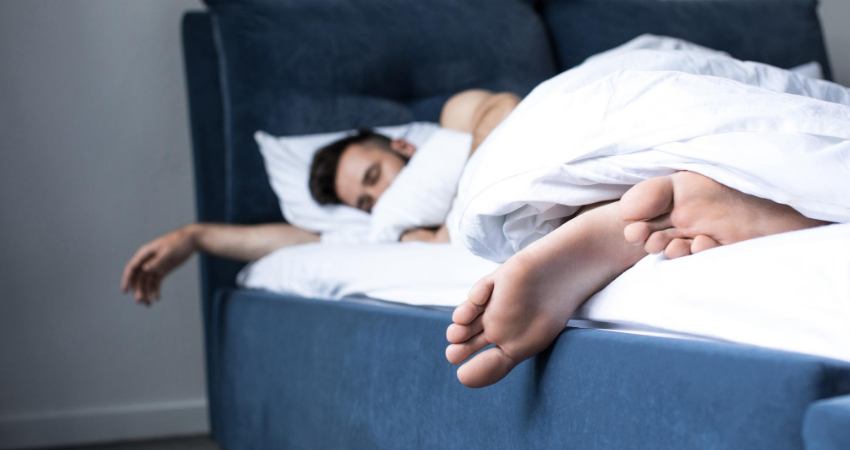After having a long, tiring day, the last thing you want is the duress you feel while trying to get a much needed sleep. It is absolutely frustrating if you are one of the estimated 164 million Americans who suffer the consequences of sleep deprivation, at the very least, once in every week.
The reasons for sleeplessness can be varied. An August 2015 Gallup Poll suggests that the average American work-week is now, Corona pandemic notwithstanding, lasts for 44 hours. And about 17% of Adult Americans work more than 60 hours in a week, which leaves less time to regroup and have a good night’s sleep. The frightening thing is that the trend isn’t showing any signs to slow down, which means we are going to have problems falling asleep.
But the truth is we can’t blame long working weeks as the only culprit that is making us awake at night. There are many contributing factors – like consumption of too much caffeine, no physical exercise, temperature imbalances, no clear concept about being sleep hygiene, anxiety, late night snacks, exposure to excessive amounts of artificial lights etc. Along with those, poor or subpar mattresses usually play a significant role. Sometimes we just need to find the appropriate mattress for our body types – mattresses for average weighted persons may not be best for mattresses for heavy persons. Then there are families with not enough rooms for every member having their separate bedrooms. In this case, the drawing room or the study room gets transformed into a bedroom at night. For these instances, having proper mattress futon vs sofa bed will also help getting proper sleep. Some people use beds for reading. To avoid neck pain that might cause sleeping issues you should get the best reading pillows for a good night’s sleep.
But the problem is, even after sorting out the problems that keep you awake at night, proper sleep at night might be a far off an idea. If you also feel like that, then please carry on reading to know about 7 best ways to fall asleep fast.
1. The Military Method:
It is well known to us that the military can push people to the best of their physical and mental limits. The importance of proper sleep for the men in uniforms literally knows no bounds. Lloyd Bud, in his book ‘Relax and Win: Championship Performance’ talked about the Military Method in detail. The technique can enable the soldiers to fall asleep within 2 minutes and it is said that after sincere practices for 6 weeks, almost all the soldiers could use the method to benefit them. Of course we civilians usually do not endure what our soldier’s experience, but that should not prevent us using the technique that is said to be very efficient for them. Here it goes:
- The first thing you need to do is to relax all the muscles of your face including the muscles of cheeks, jaws, foreheads and eyes. Those need to be in complete relaxation.
- Then get your shoulders down as far as you can.
- After that the muscles in your arms should be relaxed as well. The range here starts from the top portion of your shoulders down to the end of your fingertips.
- Then comes the relaxing of the other muscles by breathing control. You need to breathe out to make the rest of the muscles relaxed. For this to achieve, you should start from the chest and gradually go down to the legs.
- When the muscles get the desired relaxed state, spend about 10 seconds and envision a soothing panorama, whatever that brings calmness, to make your mind clear from everything that is causing restlessness to your mind.
- In case the above process seems not to be working, keep repeating the words “Don’t think” for 10 more seconds.
You may find the process hard to grasp or difficult to implement, but it is a proven method among the soldiers. So give it a sincere try for a couple of months and reap the rewards afterwards.
2. The 4-7-8 Breathing Method
Dr. Andrew Weil expanded the idea based on ‘pranayama’, a traditional yogic technique for breathing. In this method, counting plays a significant part to distract our minds from the agitations that make our mind whirring. The breathing technique regularizes our oxygen ingestion. Breathing in ample oxygen makes our parasympathetic nervous system to chill us out.
Now read the following instructions carefully and simply own it through continuous practice:
- Get the tongue just behind your front teeth and leave it resting against the roof of the mouth.
- After that exhale slowly through the mouth until the lungs get empty.
- When you feel that the lungs are out of breath, close the lips together.
- Then take a breath through the nose exactly for 4 seconds.
- After inhaling for 4 seconds, you need to stop breathing in or hold the breath for 7 seconds.
- Then keep releasing through your mouth for a count of 8 seconds.
- The cycle is finished and that’s a complete set.
- You need to repeat the cycle for at least four times.
If you feel the counts maybe a tad too long to start with, you can make the count somewhat short and then build it up from there. The main idea is to get yourself relaxed, but if you start gasping for air, the whole practice will render itself pointless.
3. Progressive Muscle Relaxation
Dr Edmund Jacobson talked about Progressive Muscle Relaxation (PMR) in the 1920s. It’s sad to know that even in that era, we the Americans were having problems falling asleep. PMR is essentially a relaxation technique depending on straining particular groups of muscles throughout our body.
As per the good doctor, physical tensing and subsequent relaxing of the muscles, people would be able to bring relaxation. PMR is often used in cohesion and in pairs with other techniques for meditation. You can do it by following the below steps:
- Start with contracting the feet muscles. First curl the toes and the soles of the feet.
- Take a deep breath, hold both your breath and contracted muscles from 5 to 10 seconds.
- Breathe away and release the contracted muscles simultaneously. Make your mind believe that your tensions are also flowing out.
- Take a rest for about 20 seconds.
- Start contracting the calf muscles and complete the above process and rest up to 20 seconds.
- Then move upwards, work every muscle group by applying the same technique until you reach towards facial muscles.
This method is a bit lengthy, taking up to half an hour to complete the work on various muscles. But research backs its success and its ability to improve overall sleep quality.
4. Imagery Distraction
Our minds love to replay anxiety-inducing moments. The reason the psychologists suggest is associated with the mind’s trying to get ahead of the problem by solving it. In most cases, this ends destroying our propensity to sleep.
The “imagery distraction” technique works by showing the brain that you are in control of your mind. The concept here is to give your imagination a free reign – let it run wild to make the brain free from the doom-and-gloom.
Here is how you should do it:
- Imagine an event, a scene or even a distant memory that can give you the true feel of happiness.
- After fixating on something that brought true happiness for you, start focusing on it.
- Consider the smells around you — let’s say you are thinking about a honeymoon trip to Paris – the smells of freshly baked croissant, the majestic view of the Eiffel Tower – anything or everything that were felt and seen in that trip.
- Now start seeing yourself wandering in the vicinity and getting closer to the pedestal of the iconic tower. Imagine that you are touching and it feels cold and weathered.
- If you try sincerely, you will be asleep before you start your ascend.
A 2002 study stated that imagery distraction actually worked. The problem is most of us fail to concentrate on the intricate details or have no faith in the process and as such don’t engage wholeheartedly. Do yourself a favor, give it a try sincerely the next time you are going to have a problem falling asleep.

5. Reverse Psychology
You may feel surprised but the truth is trying to make yourself fully awake instead of trying hard to fall asleep can actually make you doze off. The psychologists may call it with fancy terms like paradoxical intention but research actually is on its side. In theory, since sleep is an involuntary process, forcing yourself to it will get the sleep far away. Instead trick your mind to do the opposite, give your mind the feel of control, and get the distractions away.
You will soon succumb to sleep.
6. Lullaby
Classical music does the trick for some while others love the a bit faster tempo of electronic pop. Whatever the choice, science is on your side that songs can help you fall asleep. But if the songs don’t work, you can have white noise machine programmed to give you your preferred noises like the sound of flowing water over rock or the gentle humming of blowing wind etc.
7. Sleep On Your Left Side
If you sleep on your left, it is believed that the colon takes the help of gravity to make the foods move through different sections smoothly and the digestion easier. As we now know that digestive issues and sleep are interrelated, our body feels less stress from the work being done by the stomach and would help us fall asleep. Side sleeping also helps snoring and sleep apnea away.
There you go – my 7 best ways to fall asleep fast. Each and every one is backed by science, and helps people to get sleep.
I sincerely hope they will also work for you.
Thank you for reading.
Author Bio
Jennifer is the Sleeping products expert and merchandise testers. She features a vast selection of experiences to effort from when creating the standard information our visitors come to seek out. She handles the daily operations of the site, and you’ll also see her in plenty of reviews, from mattresses to travel pillow and bed pillow reviews. She’s adamant about sleep health and knows just how important it’s to our well-being. Jenifer reports, writes, and edits sleep health and sleep industry news on her sleepingpark. She will be found reading or traveling when she gets leaser time.






